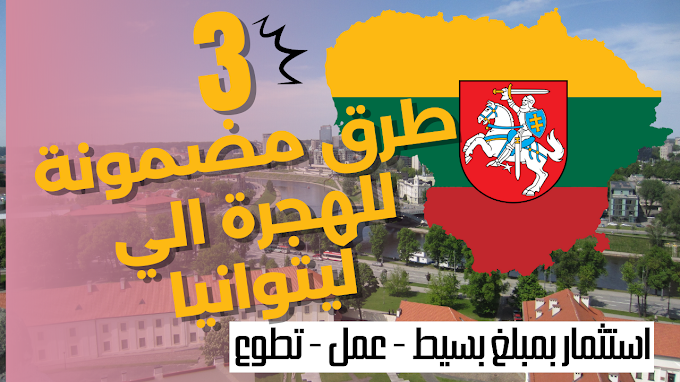10 facts you don’t know about Scotland
1- The end of World War II saw Scotland, like the rest of Britain,
having to tackle on-going problems back on their home turf. The emergence of
the National Health Service proved an effective instrument against such plagues
as infant mortality, tuberculosis, rickets and scarlet fever, while housing
conditions improved in leaps and bounds as the worst of the city slums were
pulled down and replaced by roomy (although often badly built) council houses.
Semi-rural new towns like East Kilbride, Glenrothes, Cumbernauld, Irvine and
Livingston were established throughout central Scotland.
2-
What went largely unnoticed in the
post-war euphoria was that the Labour Government’s policy of nationalising the
coal mines and the railways was stripping Scotland of many of its decision-making
powers, and therefore management jobs. The process continued into the 1970s
with the steel, shipbuilding and aerospace industries also being ‘taken into
public ownership’. This haemorrhage of economic power and influence was
compounded by Scottish companies being sold to English and foreign predators.
In 1988 British Caledonian, originally a Scotland-based airline, was swallowed
up by British Airways. To an alarming extent, Scotland’s economy now assumed a
‘branch factory’ status.
3- When the English social scientist Havelock Ellis produced his Study of British Genius (based on an analysis of
the Dictionary of National Biography) he
came up with the fact that there were far more Scots on his list than there
should have been. With only 10 percent of the British population, the Scots had
produced 15.4 percent of Britain’s geniuses. And when he delved deeper into the
‘men of Science’ category he discovered that the Scots made up almost 20
percent of Britain’s eminent scientists and engineers.
4-
Not only that, but the Scots-born
geniuses tended to be peculiarly influential. Many of them were great original
scientists like Black, Hutton, Kelvin, Ramsay and Clerk Maxwell, whose work
ramified in every direction. Others were important philosophers like the
sceptic David Hume or the economist Adam Smith, whose words, according to one
biographer, have been ‘proclaimed by the agitator, conned by the statesmen and
printed in a thousand statutes’.
5- In spite of its puritanism and thunderings from the Kirk against
‘vain outer show’, Scotland is unique among the British provinces in having a
distinctive painterly tradition. The art of Protestant Northern Europe tends to
be tormented and morbid and, given a Calvinist shadow of guilt and sin, one
would expect Scottish painting to be gloomy and angst-ridden. Instead, as if in
defiance of all that the kirk represents, it is extroverted, joyful, flamboyant,
robust – much more sensuous (even if less complex) than English art with its
inhibiting deference to the rules of good taste.
6-
It is significant that young
Scottish artists have mostly bypassed the Sassenach (English) capital to study
abroad; those from Edinburgh in Rome, the Glaswegians a century later in
pleasure-loving Paris. Growth of the arts in Scotland is linked to the relative
importance of its two major cities, and the rivalry between them (culture
versus commerce) has resulted in aesthetic dualism: where Edinburgh’s painters
are rational and decorous, raw but dynamic Glasgow has produced exuberant
rebels.
7-
Visit the 19th hole at any
of Scotland’s 400 golf courses and you’re likely to hear a heated argument as
to where the game of golf originated. The discussion doesn’t involve geography
but rather topography: the ‘where’ refers to which part of Scotland.
All involved will know that, in spite of the Dutch boasting about a few old
paintings that depict the game, it began in Scotland centuries ago, when a
shepherd swinging with his stick at round stones hit one into a rabbit hole.
8- Not for nothing was that great parable of the divided self, Dr Jekyll and Mr Hyde, written by an Edinburgh
man, Robert Louis Stevenson. He may have set the story in London, but he
conjured it out of the bizarre life of a respectable Edinburgh tradesman. More
than one critic has taken the Jekyll and Hyde story as a handy metaphor for the
city of Edinburgh itself: something at once universal yet characteristically
Scottish. Where else does a semi-ramshackle late medieval town glower down on
such Georgian elegance? What other urban centre contains such huge chunks of
sheer wilderness within its boundaries? Does any other city in Europe have so
many solid Victorian suburbs surrounded by such bleak housing estates?
Stevenson himself was inclined to agree. ‘Few places, if any,’ he wrote, ‘offer
a more barbaric display of contrasts to the eye.’
9-
Just as Mr Hyde ‘gave an
impression of deformity without any nameable malformation’, so the meaner side
of Edinburgh tends to lurk unnoticed in the beauty of its topography and the
splendour of its architecture. Even the weather seems to play its part. ‘The
weather is raw and boisterous in winter, shifty and ungenial in summer, and
downright meteorological purgatory in spring,’ Stevenson wrote of his home
town. But the Jekyll and Hyde metaphor can be stretched too far. For all its
sly duality and shifty ways, Edinburgh remains one of Europe’s most beautiful
and amenable cities.
10- To
the south, the city is hemmed in by the Pentland Hills – some of which are
almost 2,000ft (600 metres) high – and to the north by the island-studded
waters of the Firth of Forth. In 1878 Stevenson declared himself baffled that
‘this profusion of eccentricities, this dream in masonry and living rock is not
a drop-scene in a theatre, but a city in the world of everyday reality’. Which,
of course, it is. At the last count, Edinburgh contained just under half a
million people rattling around in 100 sq miles (40 sq km) on the south bank of
the Firth of Forth. While the city’s traditional economy of ‘books, beer and
biscuits’ has been whittled away by the ravages of recession and change, there
is a powerful underpinning of banking, insurance, shipping, the professions
(especially the law), universities, hospitals, and, of course, government
bureaucracies (local and central). By and large, the North Sea oil boom passed
Edinburgh by, although some of the city’s financiers did well enough by
shuffling investment funds around, and for a while Leith Docks was used as an
onshore supply base, to coat pipes and to build steel deck modules.
























0 Comments